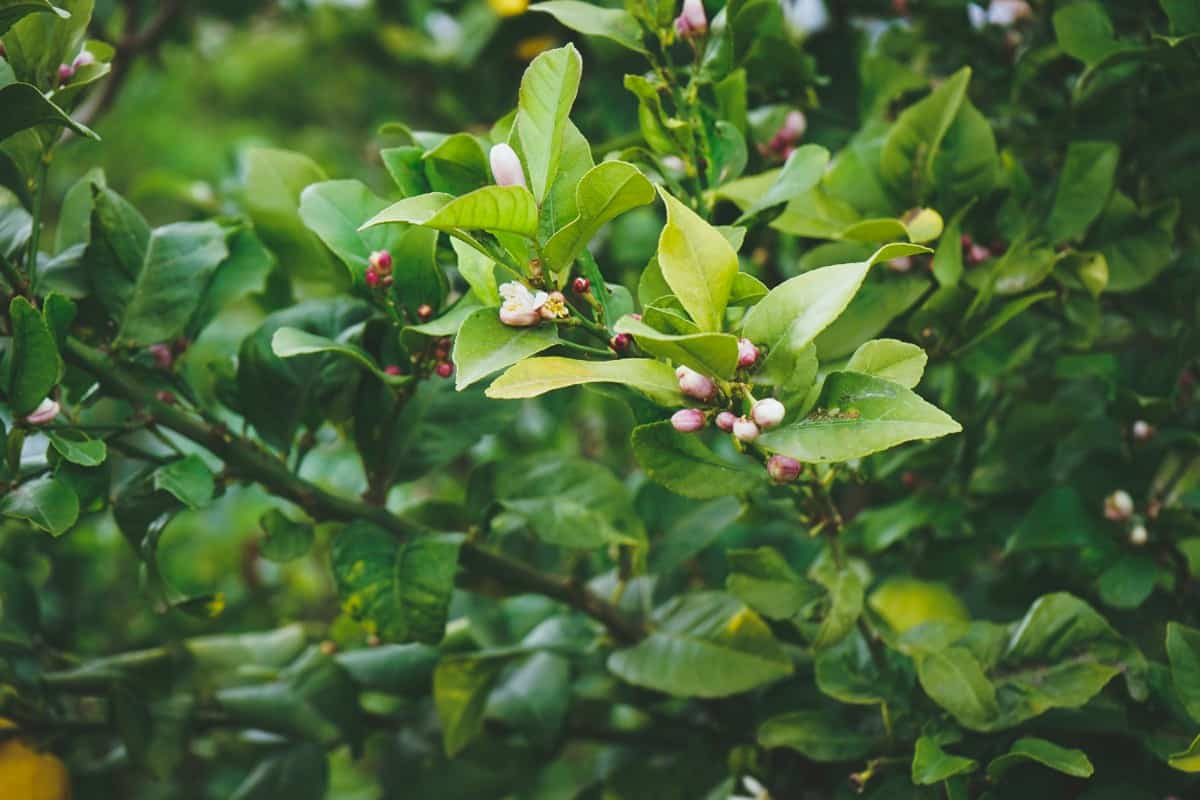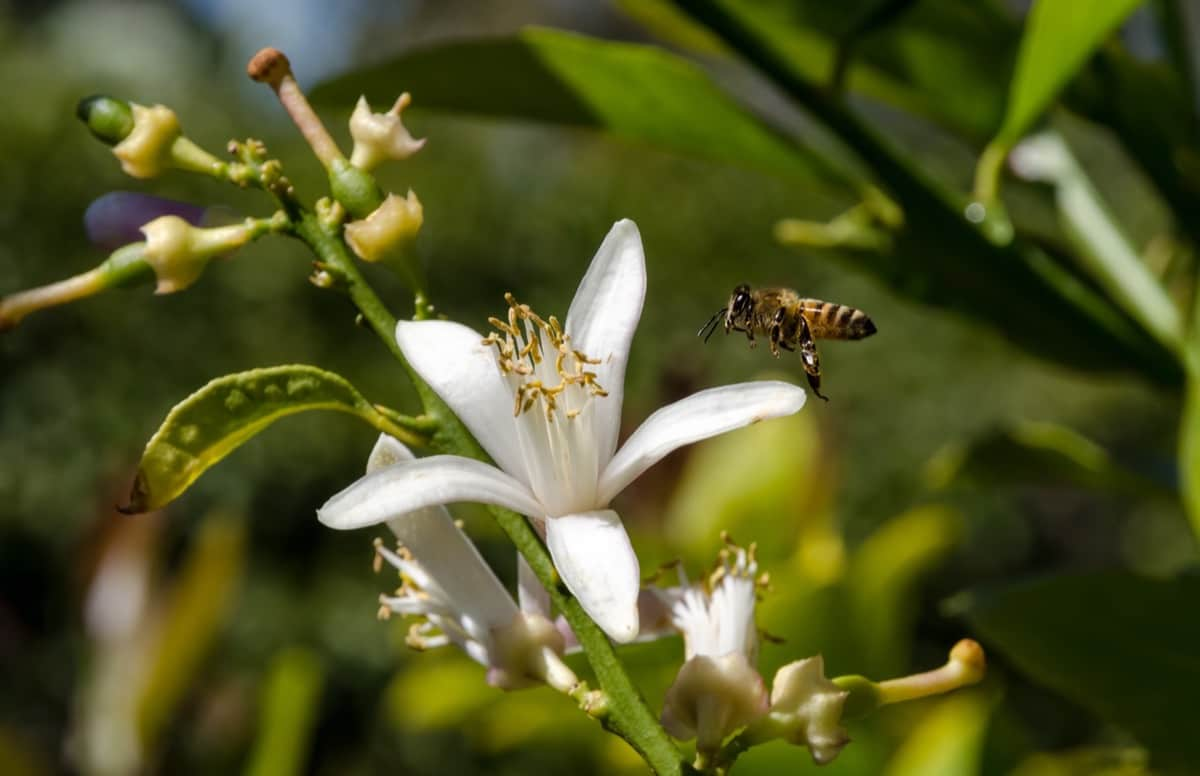Lemon trees typically produce male and female flowers, but the number of female flowers can sometimes be lower than desired. Female flowers are essential for fruit production, making it crucial to increase their number. There are several techniques to encourage the growth of female flowers in lemon trees. One effective method is to promote overall tree health through proper fertilization, pruning, and pest control.

Trees that are healthy and free from stress are more likely to produce an abundance of flowers, including female ones. Another method is manually removing male flowers, allowing the tree to focus its energy on female flower production. Additionally, some gardeners suggest using plant hormones or natural remedies, such as Epsom salt or seaweed extract, to stimulate female flower growth. By employing these techniques, increasing the number of female flowers on lemon trees is possible, ultimately leading to a higher fruit yield.
How to Increase Female Flowers in Lemon
Introduction to Lemon Cultivation
Lemon trees are stunning evergreen plants that can grow up to 150 inches tall, featuring glossy leaves, white flowers with a powerful fragrance, and refreshing fruits. They typically bloom three times a year, from May to September, in suitable climates and produce fruits ideal for eating, juicing, and processing. The best type of lemon for cultivation is the Citrus limon or lime, which can also be moved to warmer rooms in areas with inadequate citrus fruit-growing climates. To cultivate lemon trees successfully, ensure the planting pot is placed in a well-lit area.
Understand the Anatomy of Lemon Flowers
Lemon flowers comprise several parts, including the calyx, corolla, stamens, and Pistil. The calyx is the protective covering surrounding the flower bud, eventually falling away as the flower blooms. The corolla is the colorful, fragrant part of the flower that attracts pollinators. It consists of five to six petals that form a cup shape. The stamens are the male reproductive organs, composed of a filament and an anther containing pollen.
The female reproductive organ is the Pistil, which is presented at the center of the flower. It consists of the stigma, style, and ovary. The stigma is the sticky tip that receives pollen, while the style is the tube-like structure that attaches the stigma to the ovary, which contains the ovules. When a pollinator, such as a bee, visits the flower and transfers pollen from the stamens to the stigma, fertilization can occur, leading to fruit development.
Best Variety of for Cultivation Lemon
Wide varieties of lemons are available globally, each with a unique taste, acidity, and fruit size. Some of the most popular and best lemon varieties include Lisbon, Meyer, Ponderosa, Rough Lemon, Citron, Femminello St. Teresa, Villafranca Lemon, Interdonato Lemon, Genoa Lemon, Variegated Pink Lemon, Yen Ben, Bonnie Brae, Verna Lemon, Berna Lemon, Fino Lemon, Lunario Lemon, Monachello Lemon, Santa Teresa Lemon, and Gallego Lemon.
Optimal Growing Conditions for Lemon
- Lemons grow best in subtropical to tropical regions with temperatures between 70-85°F (21-29°C) and need at least 8-10 hours of sunlight daily.
- They require well-drained, slightly acidic soil with a pH between 5.5-6.5, rich in organic matter and able to retain moisture without becoming waterlogged.
- Lemon trees should be watered regularly, but not excessively, with deep watering every 7-10 days, depending on the climate and soil type.
- Regular fertilization is required to maintain lemon trees’ health and fruit production. Apply an Adequate dose of fertilizer with equal amounts of nitrogen, phosphorus, and potassium every 4-6 weeks during the growing season.
- Minimal pruning is necessary for lemon trees to maintain their shape and promote new growth. Prune the tree before new growth appears.
- Lemon trees are susceptible to pests and diseases, including spider mites, scale insects, and citrus cankers. Regular monitoring and proper care, such as removing infected leaves and fruits, can help prevent and control these issues.
In case you missed it: How to Increase Female Flowers in Cucumber: Explained in 10 Simple

Lemon Flowering Stage
The flowering stage of lemon trees occurs in winter, typically between November and February. During this time, flower buds emerge and open into light purple flowers with a female-gendered pistil and pollen-carrying stamens. This is an important stage in the growth of lemon trees, as the flowers eventually develop into fruits. Lemon trees require plenty of water during flowering to ensure healthy growth and full crop production. The blooming period lasts about two months, and with proper care and maintenance, lemon trees can repeat their reproductive stages several times within a year.
Factors that Affect Less Female Flowers in Lemon
Lemon trees may fail to blossom for several reasons, including frost damage, inadequate watering, lack of soil nutrients, and pruning off flower buds. Improper watering can cause flower buds and flowers to drop off, and irregular watering can shock the plant and result in a lack of flowers. Overwatering can also inhibit flower formation, leading to a flowerless tree. Nutrient deficiency in the soil, particularly the lack of potassium and phosphorus, can lead to poor flower bud formation and blooming.
Lemon tree flowers can fall off due to unfavorable temperatures, overwatering, transplant shock, and potassium deficiency. Cold temperatures cause frost damage, while high temperatures dry and burn the flowers. Root-rot from overwatering can starve the plant, causing malnutrition and blossom drop. Transplant shock can cause leaf and blossom loss, and potassium deficiency weakens cell adhesion, leading to blossom fall.
10 Simple Tips to Increase Female Flowers in Lemon
- Prune regularly during the dormant season to encourage new growth and development of more female flowers.
- Water your lemon tree adequately to ensure the soil remains moist but not waterlogged to support flower production.
- Use a balanced fertilizer high in potassium and phosphorus to provide essential nutrients for female flower development.
- Plant your tree in a location that receives 6-8 hours of direct sunlight daily to promote flower growth.
- Control pests like aphids and spider mites that can negatively affect flower production.
- Protect your lemon tree from cold weather and frost, which can damage flower buds.
- Encourage pollinators like bees to visit your tree by planting pollinator-friendly plants nearby.
- Fertilize and water your tree adequately during spring and summer when female flowers typically develop.
- Avoid over-fertilizing, as it can lead to excess foliage growth at the expense of flower development.
- Consider planting a dwarf lemon tree, as it is easier to manage and often produces more flowers and fruit per branch than larger trees.
In case you missed it: Hydroponic Chilli Pepper Farming in a Greenhouse: Key Rules to Start from Scratch

Conclusion
Female flowers in your lemon tree can lead to more fruit production. By following these ten simple steps, you can encourage the development of female flowers in your tree. Remember to prune during the dormant season, provide adequate water and soil nutrients, ensure sufficient sunlight, control pests, protect from cold weather, encourage pollination, fertilize during the right time, avoid over-fertilization, and consider planting a dwarf variety. You can enjoy a healthy and fruitful lemon tree by implementing these tips.
- Ultimate Guide to Ossabaw Island Hog: Breeding, Raising, Diet, and Care
- Ultimate Guide to Juliana Pig: Raising Facts, Size, Diet, Care, and Lifespan
- Raising Lleyn Sheep: Disadvantages, Price, Uses, Characteristics, and Care
- Ultimate Guide to Meishan Pig: Breed Facts, Breeding, Raising, and Care
- Ultimate Guide to Teacup Pigs: Raising, Diet, Lifespan, Cost, and Care
- Guide to Raising Poll Dorset Sheep: Facts, Profile, Characteristics, Uses, and Care
- Ultimate Guide to Bighorn Sheep: Characteristics, Diet, Lifespan, Breeding, and Lifecycle
- Ultimate Guide to Raising Katahdin Sheep: Farming Facts, Breed Profile, Uses, and Care
- Ultimate Guide to Raising Oreo Cows: Belted Galloways Farming Facts, Profile, Uses, and Care